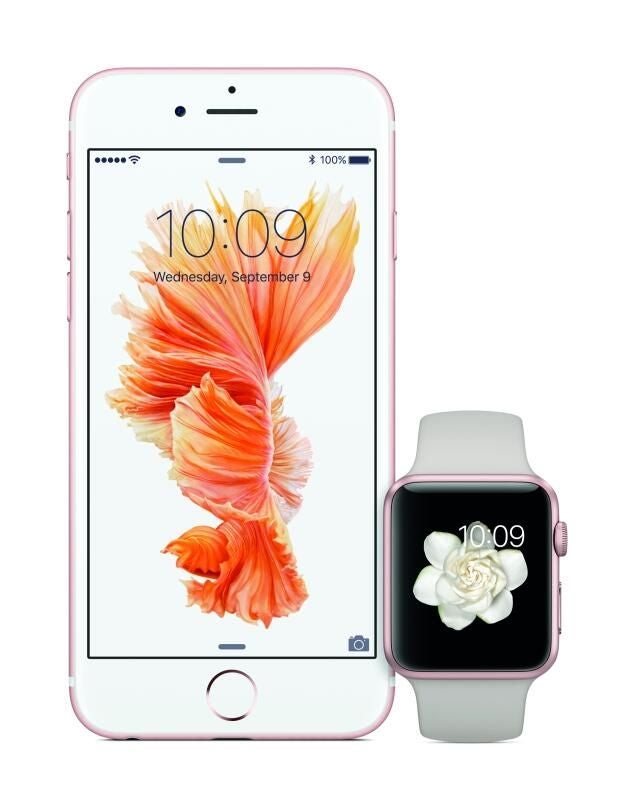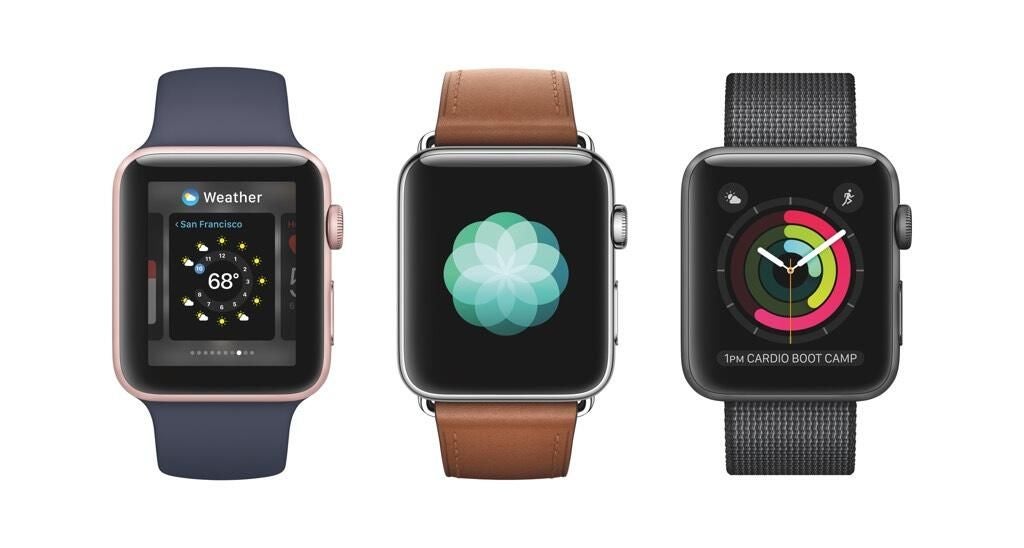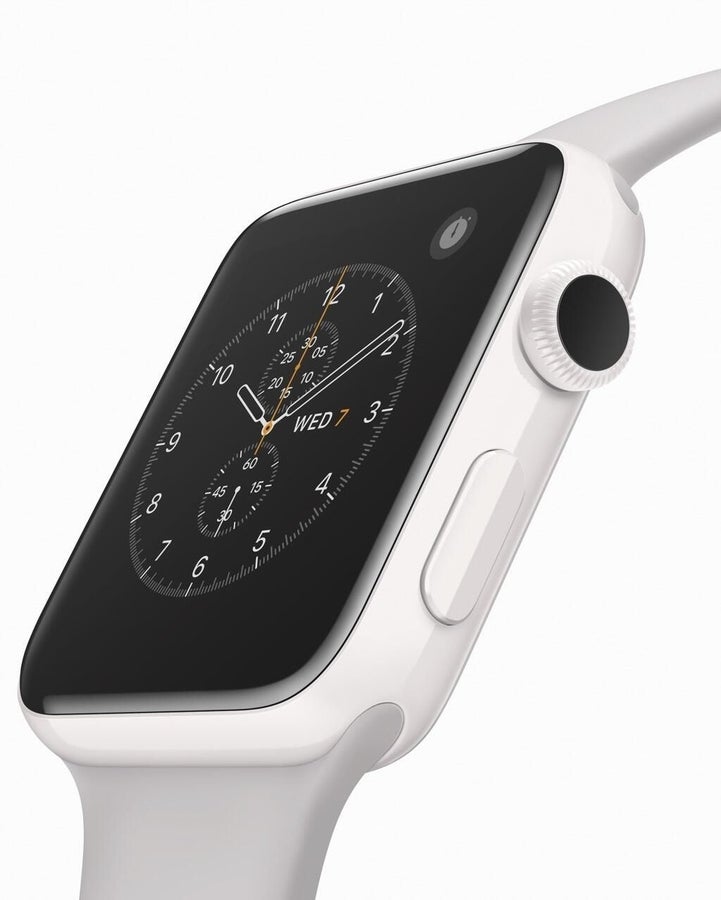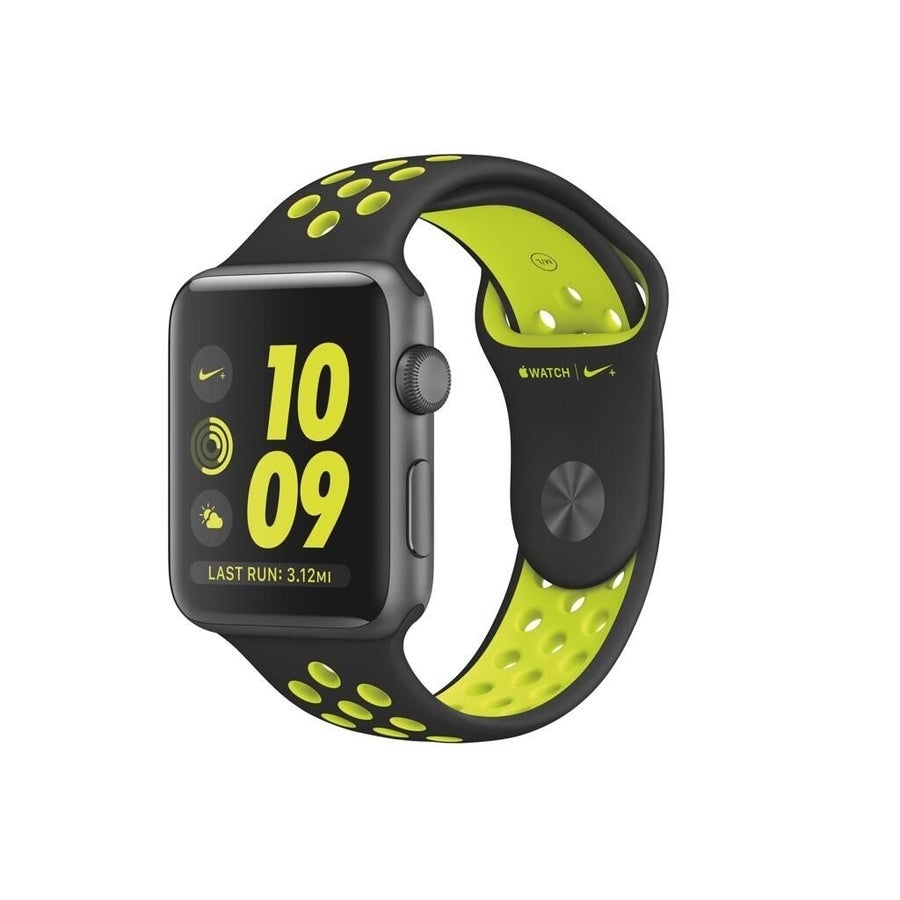Apple Watch Series 2: The smart person’s guide
This resource guide covers everything you need to know about the Apple Watch Series 2, including why it matters, and what impact it may have on enterprises.
We may be compensated by vendors who appear on this page through methods such as affiliate links or sponsored partnerships. This may influence how and where their products appear on our site, but vendors cannot pay to influence the content of our reviews. For more info, visit our Terms of Use page
The Apple Watch Series 2 is more than a timepiece. The digital wearable, which provides precision timekeeping within 50 milliseconds of the definitive global standard, mates with a compatible iPhone to provide an array of additional features and functionality. In addition to fitness, health, messaging, news, and travel information, the Apple Watch Series 2 comes with built-in GPS, water resistance to 50 meters, a fast dual-core processor, and a new display that’s twice as bright as Series 1 models. The watches provide wayfinding, audio, payment, weather, and telephone speakerphone capabilities, among other features.
Thanks to a brighter display, faster CPU, and integrated GPS, Watch Series 2 devices can be used independently to track fitness routines without an iPhone (for GPS) and while swimming or in the rain. With a brighter display, the device is also easier to read when viewing in direct sunlight. The water resistance improvement is significant, as the Watch can now be safely used in many more situations, including while kayaking, canoeing, and swimming. The built-in GPS is handy, but many users will find they never part with their iPhone, including during runs, cycling trips, or hiking, so the integrated GPS functionality may not prove as important.
Apple’s watchOS 3 powers the device. Numerous models are available featuring a multitude of bands, colors, styles, sizes, and materials.
- The Apple Watch version possesses an aluminum case with a plastic sport, woven, or nylon band. Apple Watch also is available with a stainless steel case featuring either a sport, stainless steel, or leather band.
- The Apple Watch Nike+ model boasts an aluminum case and a Nike sport band. The device also enables connectivity with the Nike+ Run Club and includes exclusive Watch Faces.
- The Apple Watch Hermés models feature stainless steel cases with a Hermés band. A sport band is also included.
- The Apple Watch Edition features a ceramic case, a white case, and a sport band. A magnetic charging dock is also included.
We’ll update this resource guide when new information is available about the Apple Watch.
SEE: Check out all of TechRepublic’s smart person’s guides
Mục Lục
Executive summary
- What is the Apple Watch Series 2? The Apple Watch Series 2 is a timepiece that places fitness, health, news, messaging, commerce, and other capabilities on the user’s wrist.
- Why does the Apple Watch Series 2 matters? The wearables market was previously largely composed of less stylish fitness devices or electronic watches possessing limited application choices and smartphone integration. Apple’s Watch Series 2 combines GPS, health, fitness, news, messaging, and other applications with timekeeping, exponentially improved smartphone integration, and a vast number of applications.
- Who does the Apple Watch Series 2 affect? The Apple Watch Series 2 is targeted to Apple iPhone 5 and later users running iOS 10 and business professionals seeking an advanced wearable that assists with conveying news, messaging information, map and travel data, and similar functionality. Fitness buffs, including swimmers, will find the device extends health and fitness application functionality and shifts the programming and interface device from a bulkier phone to the wearable watch.
- When was the Apple Watch Series 2 released? The Apple Watch was released on April 24, 2015. Pre-orders began on April 10, 2015. Apple Watch OS2 was released on September 21, 2015. Apple began accepting orders for Watch Series 2 models on September 9, 2016. Apple began fulfilling orders for Watch Series 2 models on September 16, 2016.
- How do I get the Apple Watch Series 2? Apple Watch models can be purchased at Apple retail stores, from Apple’s website, using the iOS Apple Store app, or from authorized retail stores, including Macy’s.

SEE: The Complete Apple Watch Development Course (TechRepublic Academy)
What is the Apple Watch Series 2?
Just as Apple shook up the computer, portable music player, and tablet markets with elegant products that changed the way the world worked and consumed music, so too has the manufacturer changed the wearables market. Digital watches do so much more than just tell time; they include GPS, provide weather alerts, boast changeable faces, and even enable viewing and responding to email messages and instant messages. But the Apple Watch raises the bar for modern wearables to a completely new height, setting a new standard for intuitive interaction with fitness applications, smartphone functionality, and paying for purchases.
Apple’s Watch delivers critical information to a user’s wrist in elegant ways that permit the user to readily view and react and respond to incoming messages and alerts. For example, the Watch has a predetermined number of common responses to instant messages, including Yes, No, Great, Sorry, can’t talk right now, and In a meeting. Call you later? When someone texts you a question saying do you prefer A or B, such as do you want Pizza or Enchiladas for dinner, the watch understands you’re being asked a question and adds to predetermined responses options for responding pizza or enchiladas.
SEE: Apple in the Enterprise: A Strategic Guide (ZDNet/TechRepublic special feature)
Notifications enable receiving news updates and application alerts, as you’ve configured on your iPhone, on your wrist. Glances enable accessing and browsing specific applications you select from the Watch face. Complications permit configuring an Apple Watch face to display custom selections, such as calendar, temperature, and weather information. No wearable device previously offered such wide-ranging capabilities.
A linear-actuator Taptic Engine inside the watch delivers a variety of different tactile tapping sensations to assist users in differentiating between incoming phone calls, a new email message, and a calendar reminder alert. Force Touch display technology senses force and calls additional application control functionality, such as customizing watch Faces, accessing application settings, pausing a workout, and more.
In addition to mail, message, and phone calls, the watch supports additional communication, including returning emojis, leveraging dictation, sharing your location, freehand sketches, and even the ability to share your heartbeat with others. Numerous applications are built specifically with Watch functionality in mind, including all of the following:
- Messages
- Phone
- Calendar
- Reminders
- Facebook Messenger
- Activity
- Workout
- Maps
- Wallet
- Siri
- Music
- Camera Remote
- Remote
- Weather
- Stocks
- Photos
- Alarm
- Stopwatch
- Timer
- World Clock
- Numerous other third-party apps
Specifications
- 38mm and 42mm models
- S1P dual-core processors (Apple Watch Series 1 models) and S2 dual-core processors (Apple Watch Series 2 models)
- 7000 series aluminum (aluminum models)
- 316L cold-forged stainless steel (stainless models)
- 1,000 nit displays (Series 2 models)
- Aluminosilicate glass (Ion-X models)
- Diamond wire-cut, precision machined and polished sapphire displays (Apple Watch and Watch Edition models)
- 18-karat solid gold (Watch Edition models)
- Ceramic cases (Apple Watch Edition models)
- Up to 18-hour performance
- Up to 6.5-hour audio playback
- Up to 3-hour talk time
- Up to 6.5-hour workout time
- Up to 72-hour power reserve operation
- Magnetic charger
- Heart rate sensor leveraging photoplethysmography technology
- Accelerometer
- GPS
- Linear-actuator Taptic Feedback engine
Additional resources:

Why does the Apple Watch Series 2 matter?
The Apple Watch changes the way business professionals interact with their digital devices. No longer must a bulky smartphone be removed from a pants or jacket pocket. The wearable enables more surreptitious and discreet viewing and responding to messages.
The Apple Watch places a vast array of capabilities on its users’ wrists. The device makes it easy to pay for purchases, confirm flight status, find an airline gate, map a destination, perform searches using Siri and dictation, and even answer calls and use a speakerphone. With the watch, users can adjust music system playback and remotely control cameras and Apple TVs, including in meeting and board rooms.
As the Internet of Things (IoT) trend continues, devices such as Apple Watch are significantly changing the way people consume news, receive alerts and reminders, record health and fitness data, view and respond to email and instant messages, and interact and share data from myriad applications.
Additional resources:
Who does the Apple Watch Series 2 affect?
Apple Watch buyers might include business professionals, athletes, students, users seeking a healthy lifestyle, and anyone else possessing an iPhone 5 or newer device running iOS 10 who wishes to further leverage popular iOS apps while decreasing the dependency on having to use one’s smartphone for all mobile tasks.
The device is generating significant press. Apple is selling millions of units. Numerous third-party providers have rushed to introduce their own alternative bands, stands, accessories, and applications.

Businesses are also impacted. As users increasingly bring their own devices (including iPhones, Watches, and tablets) into corporate environments, IT departments will receive requests to assist supporting the devices. While Apple Watches don’t present many security risks within an organization, they can connect to smartphones, which are routinely configured with the ability to connect corporate applications, data, systems, and email platforms. Thus, the risk exists that, if an Apple Watch is mislaid or stolen within an organization, the individual possessing the Watch could access that user’s mail, instant messages, contacts, calendar, and other information.
Additional resources:
When was the Apple Watch Series 2 released?
Apple began accepting Watch Series 2 orders on September 9, 2016. Apple began fulfilling Watch Series 2 orders on September 16, 2016.
The original Apple Watch Series 1 was released April 24th, 2015. Pre-orders began April 10, 2015.

The initial Apple Watches shipped with Apple watchOS 1. Shortly thereafter Apple released an updated version of the operating system, Apple watchOS2, on September 21, 2015. watchOS 3 was released September 13, 2016.
watchOS2 introduced several new features and capabilities. The new OS added several Watch Faces, including cityscapes and Time-Lapse, which enables turning the Crown to fast forward to view future weather forecasts, for example. Additional Complications, the important information items that can be customized and added to a Watch Face display, were included with watchOS2.
watchOS 3 introduced performance improvements, new Faces, and new applications. Breathe, which encourages harried professionals to take a moment to relax, was among the new applications introduced or enhanced for Watch operation. Reminders and Notes were also updated to better integrate with the Watch. Among the new Faces included with watchOS are Minnie Mouse, Activity, and Numerals.
watchOS 3.x updates introduced additional language support for the Scribble feature, music playlist synchronization displaying in the Apple Watch app on the iPhone, Theater Mode that silences the watch and keeps the device dark unless the face is tapped and the ability to leverage Siri to interact with apps, begin workouts, send messages, make payments, and perform other tasks. As is typical, watchOS 3.x updates also added common performance improvements and bug fixes.
Additional resources:
Competitors to the Apple Watch
Other fitness devices and digital wearables don’t match the iCloud integration the Apple Watch provides. These are some of the products attempting to compete with the Apple Watch:
Additional resources:
How do I get the Apple Watch Series 2?
Apple Watch models can be purchased at Apple retail stores, from Apple’s website, or using the iOS Apple Store app. Several authorized retail outlets, such as Macy’s, also sell the watches.
Apple Watch Series 1 models are available with an aluminum case and sport band. 38mm models begin at $269. 42mm models begin at $299.

The Apple Watch Series 2 begins at $369, features aluminum cases with sport, woven, or nylon bands or stainless steel cases with sport, stainless steel, or leather bands. Both 38mm and 42mm models are available.
The Apple Watch Nike+ model begins at $369 and are available in both 38mm and 42mm sizes. The co-branded model features an aluminum case and a Nike sport band.
Special Hermés versions, the Apple Watch Series 2 Hermés edition, start at $1,149, feature a stainless steel case and Hermés dress and Apple sport bands. Unique models are available in 38mm and 42mm versions.
The flagship luxury version remains the Apple Watch Edition, which with Apple’s Series 2 release boast white ceramic cases. The Watch Edition models start at $1,249 for 38mm models and $1,299 for 42mm versions.
Additional resources:






